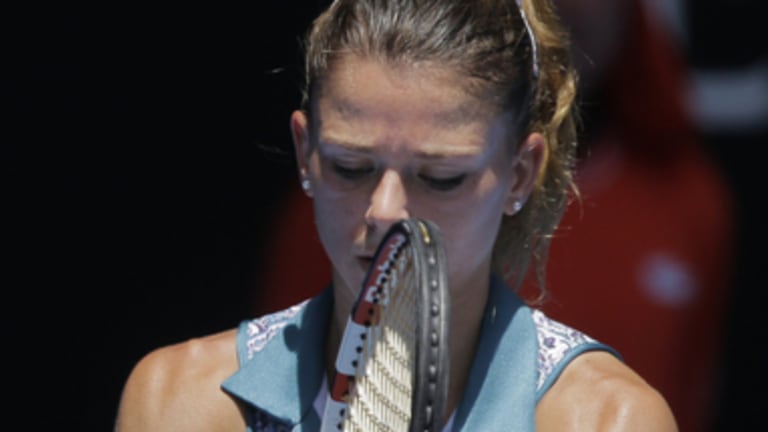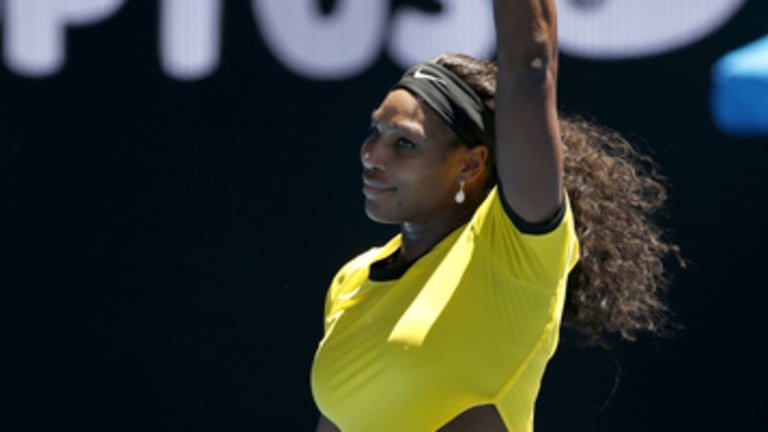It had been four months since Serena Williams had played a match. Which meant that it had been four months since she had done her patented “ace walk.”
You know the one; you’ve seen it a million times. It starts when Serena is challenged, briefly, on her serve. Her opponent, hopeful for a second, pumps her first. Serena notices this. Then she bares down, gets to game point, and holds by reaching back and hammering an ace with a few extra M.P.H.s on it. As she walks to the sideline for the changeover, she raises her head a little higher and shoots her opponent a stern glare for good measure. Sometimes I think Serena, consummate champion and consummate dramatist that she is, tries harder to end a game with an ace when she knows there's a changeover coming up.
As I said, it didn’t take long for Serena to bring out her ace walk at this year’s Australian Open. It happened in the first set of her first-round match, a slam-bang 6-4, 7-5 win over Camila Giorgi. You could see it coming. The Italian was doing something unusual to Serena, something that the world No. 1 has never liked from her opponents: She was dictating play and forcing Serena to defend. This really wasn't surprising, because Giorgi, who owns wins over Maria Sharapova and Caroline Wozniacki, doesn’t know how to do anything else. During rallies and in between rallies, she has one gear: She swings fast and moves even faster to the next point. Nothing, not even a dozen double-faults, can slow her down or get her to react.

